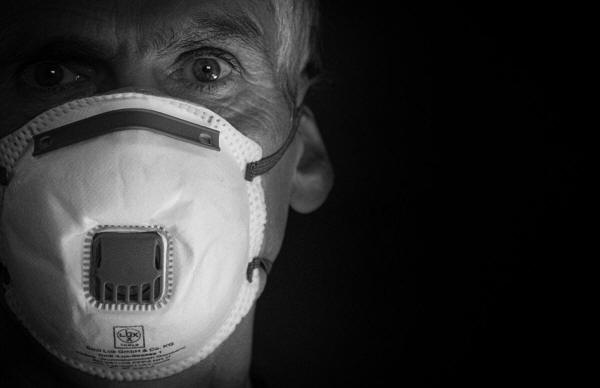|

by Marcia Frellick
March 02, 2020
from
MedScape Website

The mortality rate associated with
COVID-19 may be "considerably less
than 1%," instead of the 2% reported by some groups, write
Anthony Fauci, MD, director of the National Institute of
Allergy and Infectious Diseases, and colleagues in an editorial
(Covid-19
- Navigating the Uncharted) published February 28 in the
New England Journal of Medicine.
The editorial appeared alongside a report (Clinical
Characteristics of Coronavirus Disease 2019 in China) by
Wei-jie Guan, PhD, and colleagues, that characterized 1099
patients with laboratory-confirmed COVID-19 from 552 hospitals in
China through January 29, 2020.
Guan is with the
Guangzhou Institute of Respiratory Health, First Affiliated
Hospital of Guangzhou Medical University in China,
"Guan et al report
mortality of 1.4% among 1099 patients with laboratory-confirmed
Covid-19; these patients had a wide spectrum of disease
severity.
If one assumes that
the number of asymptomatic or minimally symptomatic cases is
several times as high as the number of reported cases, the case
fatality rate may be considerably less than 1%," Fauci and
colleagues write.
"This suggests that
the overall clinical consequences of Covid-19 may ultimately be
more akin to those of a severe
seasonal influenza (which has a
case fatality rate of approximately 0.1%) or a
pandemic influenza (similar to
those in 1957 and 1968) rather than a disease similar to SARS or
MERS, which have had case fatality rates of 9 to 10% and 36%,
respectively."
Fauci and colleagues also
said research is in full swing to develop a vaccine and they write
that the NIH expects the first patients will enter phase 1 trials by
early spring.
Characteristics of the Chinese Cohort
In the 1099-patient cohort, the average age was 47 years and 41.9%
were female, Guan and colleagues report.
Overall, 67 (6.1%) patients experienced a composite endpoint event,
which included,
admission to an
intensive care unit, use of a mechanical ventilator, or death.
When the events were
analyzed individually, 5% of patients were admitted to the ICU, 2.3%
placed on a ventilator, and 1.4% died.
Among 173 patients with severe disease, 43 patients (24.9%) met the
composite endpoint.
The researchers calculated the cumulative risk of the composite
endpoint among all patients as 3.6%; for those with severe disease,
the cumulative risk was 20.6%.
The authors point out that patients often presented without fever
and many did not have abnormal imaging results.
Among 877 patients
with non-severe disease, 157 (17.9%) had no radiographic or
computed tomography (CT) abnormality detected.
Among those with
severe disease, the percentage with normal radiographic and CT
results was substantially lower at 2.9%.
Of those with abnormal
radiographic findings,
"the most common
patterns on chest CT were ground-glass opacity (56.4%) and
bilateral patchy shadowing (51.8%)," write Guan and colleagues.
Most Common
Symptoms
Fever
was the most common symptom, the authors write.
It was present in
only 43.8% of the patients at admission, but 88.7% had or
developed fever while in the hospital.
The second most
common was cough (67.8%).
Nausea, vomiting, and
diarrhea were uncommon (found
in 5% or less of patients).
Nearly 1 in 4 had,
"at least one
coexisting illness (e.g.,
hypertension and chronic
obstructive pulmonary disease)," the authors write.
"Lymphocytopenia
was present in 83.2% of the patients on admission," they note.
Demographic
Characteristics
Overall, 38 (3.5%) of the patients were healthcare workers, and 483
patients (43.9%) were residents of Wuhan, China, the authors write.
Only 1.9% of the patients
had come into direct contact with wildlife.
Among those who lived outside Wuhan, 72.3% had contact with people
who lived there. More than a quarter (25.9%) of nonresidents had
neither visited the city nor had contact with Wuhan residents.
On admission, 926 in the cohort had non-severe disease and 173 were
categorized as having severe disease.
The average time in the hospital was 12 days.
"During hospital
admission, most of the patients received a diagnosis of
pneumonia from a physician (91.1%), followed by [acute
respiratory distress syndrome] (3.4%) and shock (1.1%).
Patients with severe
disease had a higher incidence of physician-diagnosed pneumonia
than those with non-severe disease (99.4% vs. 89.5%)," the
authors write.
Those who had severe
disease in the cohort overall tended to be older by an average of 7
years.
The research was funded by,
-
the National
Health Commission of China
-
the National
Natural Science Foundation
-
the Department of
Science and Technology of Guangdong Province
| 

